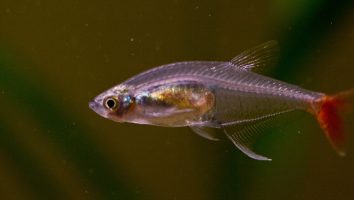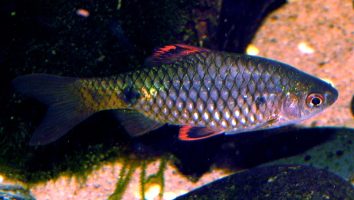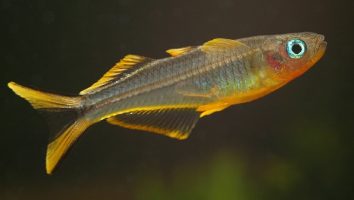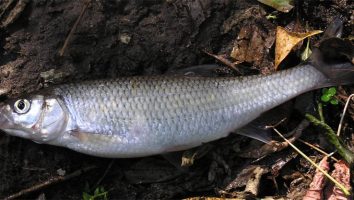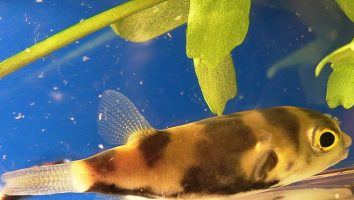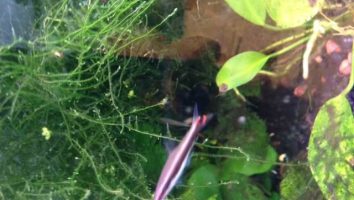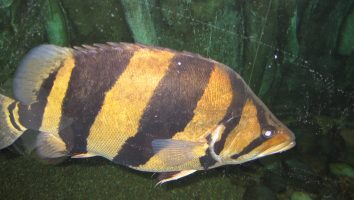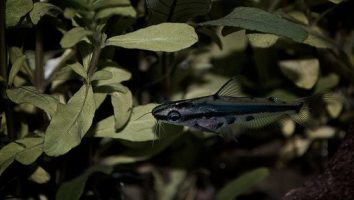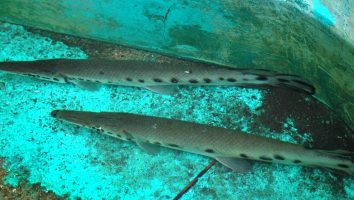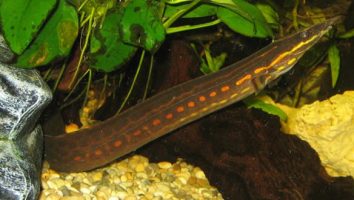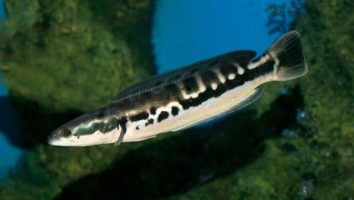The striped wallago catfish is a freshwater fish that is native to Southeast Asia. It is also known as the Asian bonytongue, Asian catfish, or wallago attu.
This fish can grow to be quite large, reaching up to 4 feet in length! They have a long, eel-like body with a brown or black stripe running down the length of their body.
The striped wallago catfish is a nocturnal fish, so they are most active at night. During the day, they will hide in caves or other dark places in their tank.
This fish is not recommended for beginners, as they can be difficult to care for. However, if you are experienced with fishkeeping and are up for a challenge, then the striped wallago catfish may be the fish for you!
Table of contents
Species overview
The striped wallago catfish (scientific name: Wallago attu) is a freshwater fish that is native to South and Southeast Asia. It is most commonly found in India, Pakistan, Bangladesh, Nepal, and Sri Lanka.
This fish prefers slow-moving waters with a lot of vegetation. This could be anything from ponds and lakes to rivers and streams.
The striped wallago catfish is a predator and will hunt for smaller fish, crustaceans, and insects.
This fish is popular in the aquarium trade due to its unique coloration. The stripes on this fish can be quite striking, and they are sure to add some personality to your aquarium.
Appearance
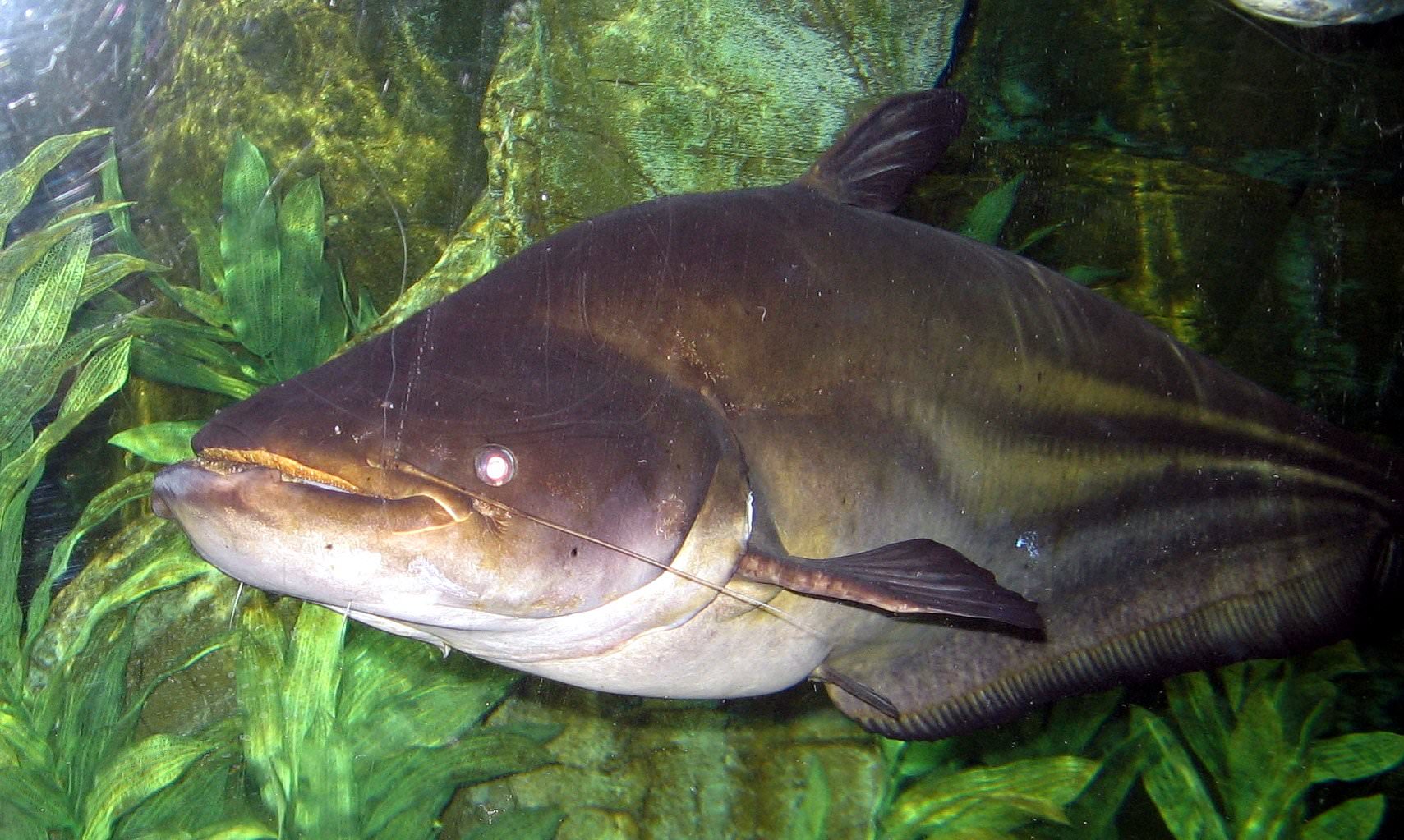
The first thing you’ll notice about this species is their long and eel-like bodies. They have a slim build that can grow quite long (up to 4 feet in some cases).
They get their name from the numerous stripes that run vertically down their bodies. These stripes are dark and typically contrast against the fish’s light coloration.
The fins on this fish are very different from most other freshwater species. The dorsal fin is shorter than the anal fin and both of these fins are placed further back on the body.
The pectoral fins are also quite different. They’re very long, thin, and they begin almost at the fish’s head.
The caudal fin is forked and relatively tall.
The eyes on this fish are small and placed towards the top of their head.
Lifespan
The average lifespan for a Striped wallago catfish is around 10 years. This is a pretty long time for a fish and it’s a good indicator of how tough these guys are.
Of course, as with any fish, there are a number of things that can shorten their lifespan. Things like poor water quality, stress, or a suboptimal diet can all lead to a shorter life for these fish.
Size
The average size of a Striped wallago catfish is around 2 feet in length, but they can grow up to 4 feet long. These fish are also quite slender, so they don’t require a lot of width in their tank.
Tank
Tank Size
The recommended minimum tank size for a single striped wallago catfish is 100 gallons. If you want to keep more than one fish, you should add an additional 50 gallons for each additional fish.
These fish can grow to be quite large, so it’s important to provide them with enough space to swim and explore. A larger tank will also give you a little more leeway when it comes to water quality and filtration.
Water Parameters
The striped wallago catfish is a freshwater species that is found in many different parts of Southeast Asia. As a result, they have a pretty wide range of water parameters that they can tolerate.
That said, they do prefer water on the warm side with a moderate amount of flow. They’re also pretty tolerant of different water hardness levels, but they prefer soft to medium hardness.
Here are a few water parameters to keep in mind when setting up a striped wallago catfish tank.
- Water temperature: 75 to 82 degrees Fahrenheit
- pH levels: 6.5 to 7.5
- Water hardness: 5 to 15 dGH
- Alkalinity Levels: 4-8 dKH
What To Put In Their Tank
When it comes to setting up an aquarium for a Striped Wallago Catfish there are a few things that you need to take into consideration.
The first is that these fish grow to be quite large (up to 4 feet in length in the wild). This means that you need to have a tank that can accommodate their size. A 125-gallon tank is the minimum we recommend, but something even larger would be ideal.
The second thing to consider is their water needs. Striped Wallago Catfish come from slow-moving rivers and streams in Southeast Asia. This means that they’re used to waters with very little flow.
You don’t need to worry about creating a ton of movement in their tank, but a moderate amount of flow is still necessary. We recommend using a canister filter with an output of around 350 GPH.
As for the substrate, these fish don’t really have any specific needs. You can use gravel, sand, or even a bare-bottom tank if you want. Just make sure that the substrate you choose won’t end up being a choking hazard for these big fish.
When it comes to decor, you have a few options. Rocks, driftwood, and plants are all suitable choices. Just make sure that any rocks or driftwood you use are securely in place. These fish are known to uproot plants, so be prepared for that as well.
Common Diseases
Striped wallago catfish are actually pretty hardy fish. They’re not very prone to diseases and illnesses, which is great news for anyone who’s thinking about keeping them as pets.
However, that’s not to say that they can’t get sick. Like any other animal, they can fall ill if the conditions in their habitat are not ideal.
The most common disease that these fish experience is ich. This is a very common freshwater parasite that can affect any fish, no matter how big or small.
The most obvious symptom of ich is the presence of white spots on the body, fins, and gills of your fish. If you notice this, it’s important to act fast and begin treatment immediately.
If left untreated, ich can be fatal. However, it’s important to note that ich is very easy to treat and most fish will make a full recovery if you act quickly.
The best way to prevent your fish from getting sick is to maintain a clean and stable habitat. This will help to keep the water quality high and minimize the risk of disease.
Behavior & Temperament
The striped wallago is a predatory catfish that is known to be quite aggressive. In the wild, these fish hunt in packs and work together to take down their prey.
While they are not known to be overly aggressive towards humans, they have been known to attack other fish in aquariums. If you have other fish in your tank, it is best to monitor them closely when you first introduce a striped wallago.
These fish are also known to be quite active. They are constantly on the move, searching for food. This can make them a bit of a nuisance in aquariums, as they tend to uproot plants and disturb other fish.
Tank Mates
When it comes to finding tank mates for a striped wallago catfish, the number one priority is to find fish that occupy different levels of the water column.
This species is a mid-water swimmer and prefers to stay in the open. As a result, you don’t want to add fish that stay close to the bottom since they’ll be competing for the same space.
The good news is that there are plenty of fish that occupy different levels of the water column. This gives you a lot of options to choose from when stocking your tank.
Some good tank mates for a striped wallago catfish include:
- Rainbowfish
- Tetras
- Danios
- Rasboras
- Gouramis
*Barbs
Breeding
The striped wallago catfish is a mouthbrooder, which means the female will carry the fry in her mouth until they’re ready to be released into the wild.
This species is a bit difficult to breed in captivity. They’re not very common in the aquarium trade, so there isn’t a ton of information available.
The best way to set up a breeding tank is to mimic the striped wallago catfish’s natural habitat as closely as possible. They come from slow-moving rivers in Southeast Asia.
The water should be around 76 degrees Fahrenheit with a neutral pH. The tank should be at least 50 gallons.
As for decor, use driftwood and live plants. The plants are especially important because the fry will hide in them when they’re first born.
When you’re ready to add the fish, put two males for every female. The males are larger and have longer fins.
Feed the fish live foods to encourage spawning. Once the female is ready to lay her eggs, she’ll do it on a flat surface like a rock or piece of driftwood.
The male will then fertilize them. After that, the female will pick them up in her mouth and carry them around until they hatch. This process takes about two weeks.
Once the fry have hatched, the female will release them into the wild. At this point, you can start feeding them baby brine shrimp or other live foods.
Conclusion
The Striped Wallago Catfish is a unique and interesting fish that will no doubt add some excitement to your aquarium. They’re not the easiest fish to care for, but with some patience and dedication, we think you’ll be successful.
This fish is best suited for experienced fishkeepers who are willing to put in the time to research and learn about their specific needs.
If you’re up for the challenge, we think you’ll be very happy with this fish!

